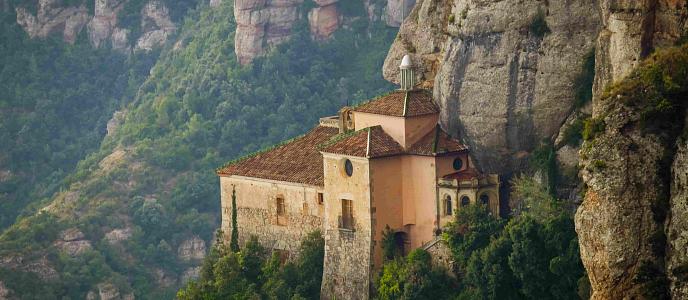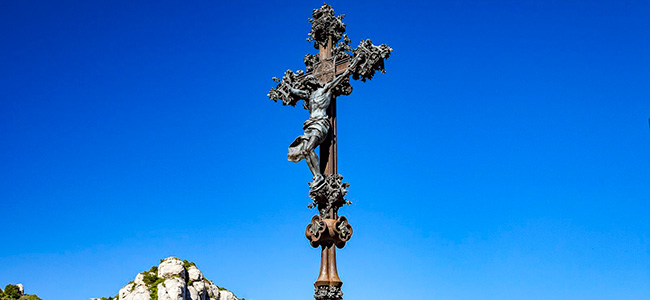Holy Cave of Montserrat

It is the place where, according to legend, the Image of the Virgin Mary was found. On the way you can see the Monumental Rosary, fifteen modernist sculptural groups corresponding to the fifteen mysteries of the Rosary.
To understand the origins of the chapel of the Holy Cave, it must be borne in mind that all the Montserratine historiography of the fourteenth and nineteenth centuries based the origins of the Sanctuary on a legend: that of the Invention or discovery of the Holy Image.
Its construction dates from the end of the seventeenth century and the beginning of the eighteenth. To the right of the altar, there is a reproduction of the image of the authentic Virgin Mary venerated in the basilica. Despite the serious material damage caused by the French War (1811-1812) and subsequent natural disasters, the holy place today represents a place of encounter, prayer and Marian devotion for many pilgrims who come to visit and pray.

With the Monumental Rosary, built between 1896 and 1916, the path also becomes a path of prayer. An open-air modernist artistic-religious ensemble of the most important of the ss. XIX-XX, in which architects such as Puig i Cadafal, Joan Martorell, A. Gaudí, Bonaventura Bassegoda, and sculptors such as Francesc Pagès, Joan Campeny, the Vallmitjanas, Anselm Nogués, J. Limón, Josep Reynés, Joan Flotats, Mari Maglariano, Manuel Cusachs participated.
This is the third itinerary included in the Open Air Museum. A winding itinerary with splendid panoramic views and flanked by monuments symbolizing the mysteries of the Rosary. Route without difficulties but with a last section of steep climb on the way back that can be avoided by taking the funicular.

